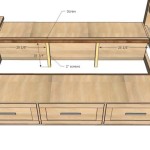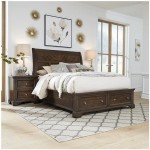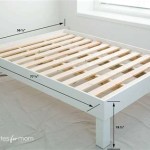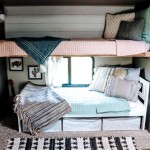Are Loft Beds Dangerous?
Loft beds, with their space-saving design and stylish appeal, have become increasingly popular in bedrooms across the globe. However, while offering a practical solution for small rooms, they also come with inherent safety concerns. The elevated sleeping platform, while seemingly innocuous, poses a unique set of risks that warrant careful consideration before making a purchase. Understanding these potential dangers and implementing appropriate safety measures is crucial for ensuring the well-being of everyone using a loft bed.
Risk of Falls
The most significant danger associated with loft beds is the risk of falls. The height of the bed, coupled with the absence of surrounding walls, creates a significant drop that can lead to serious injuries. Children, especially younger ones, are particularly vulnerable due to their developmental stage and inherent clumsiness. Even adults, particularly those who are unsteady on their feet, can suffer severe injuries from a fall.
The height of the bed plays a crucial role in the severity of potential falls. The higher the bed, the greater the impact force upon landing, increasing the likelihood of broken bones, head injuries, and even fatalities. This risk is further amplified by the lack of surrounding walls, making the bed essentially an open platform. Children, especially those prone to active play and sleepwalking, may easily roll off the bed without realizing the height they are falling from.
Fire Safety Concerns
Another important safety concern with loft beds relates to fire safety. The elevated platform, often constructed from materials like wood, can present a fire hazard, especially in the absence of adequate fire safety measures. In case of a fire, escaping from a loft bed can be significantly more challenging than from a standard bed due to the height and the potential for smoke and flames to travel upwards.
The presence of flammable materials near the bed, such as curtains or rugs, can exacerbate the fire risk. The proximity of the bed to the ceiling also poses a significant concern, as heat and smoke can quickly rise and engulf the sleeping occupant. Furthermore, the limited escape routes available in loft beds, particularly those without ladders or stairs, can hinder the escape of occupants in case of a fire.
Other Safety Risks
Beyond the risks of falls and fire, loft beds can also present other safety hazards. The inherent space beneath the bed, often used for storage, can become a haven for dust, allergens, and pests. The lack of proper ventilation in this enclosed space can also lead to mold and mildew growth, posing health risks to occupants, particularly those with allergies or respiratory issues.
The design of the bed itself can also create safety concerns. The ladder or stairs used to access the bed can be unstable or poorly designed, increasing the risk of falls. The guardrails around the sleeping platform, often flimsy or improperly installed, may not be sufficient to prevent occupants from falling over the edge. Lastly, the weight capacity of the bed should be carefully considered, particularly for those who are heavier or who frequently have guests sleeping on the bed.

How Safe Is Your Bunk Bed Do The Rails Meet Regulation Standards

Are Bunk Beds Dangerous

Are Loft Bunk Beds Safe For Kids Toddlers Read Before Sleep Advisor

Hazards Bunk Beds Kids In Danger

Are Loft Bunk Beds Safe For Kids Toddlers Read Before Sleep Advisor

Slide Bed Safety Checklist Sleep And Safely Maxtrix Kids

Guide To Bunk Bed Safety Cuckooland

Are Loft Beds Safe For S And What You Should Consider Before Getting One Home Forever

The Bedstar Guide To Bunk Bed Safety

Top 10 Double Decker Bunk Bed Safety Tips For Your Kids Picket Rail Custom Furniture Interiors







